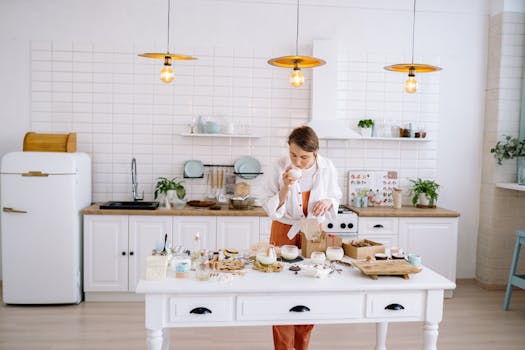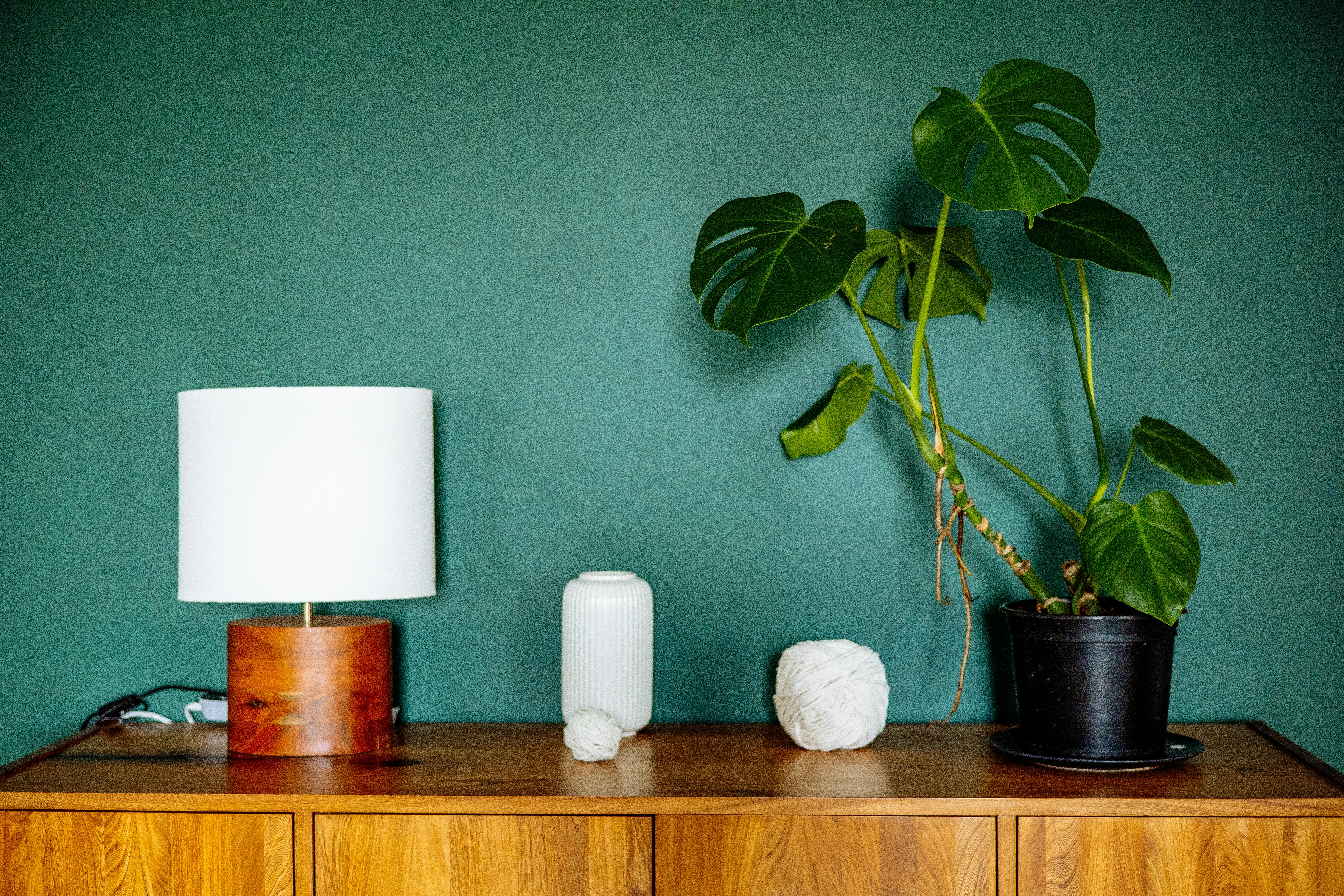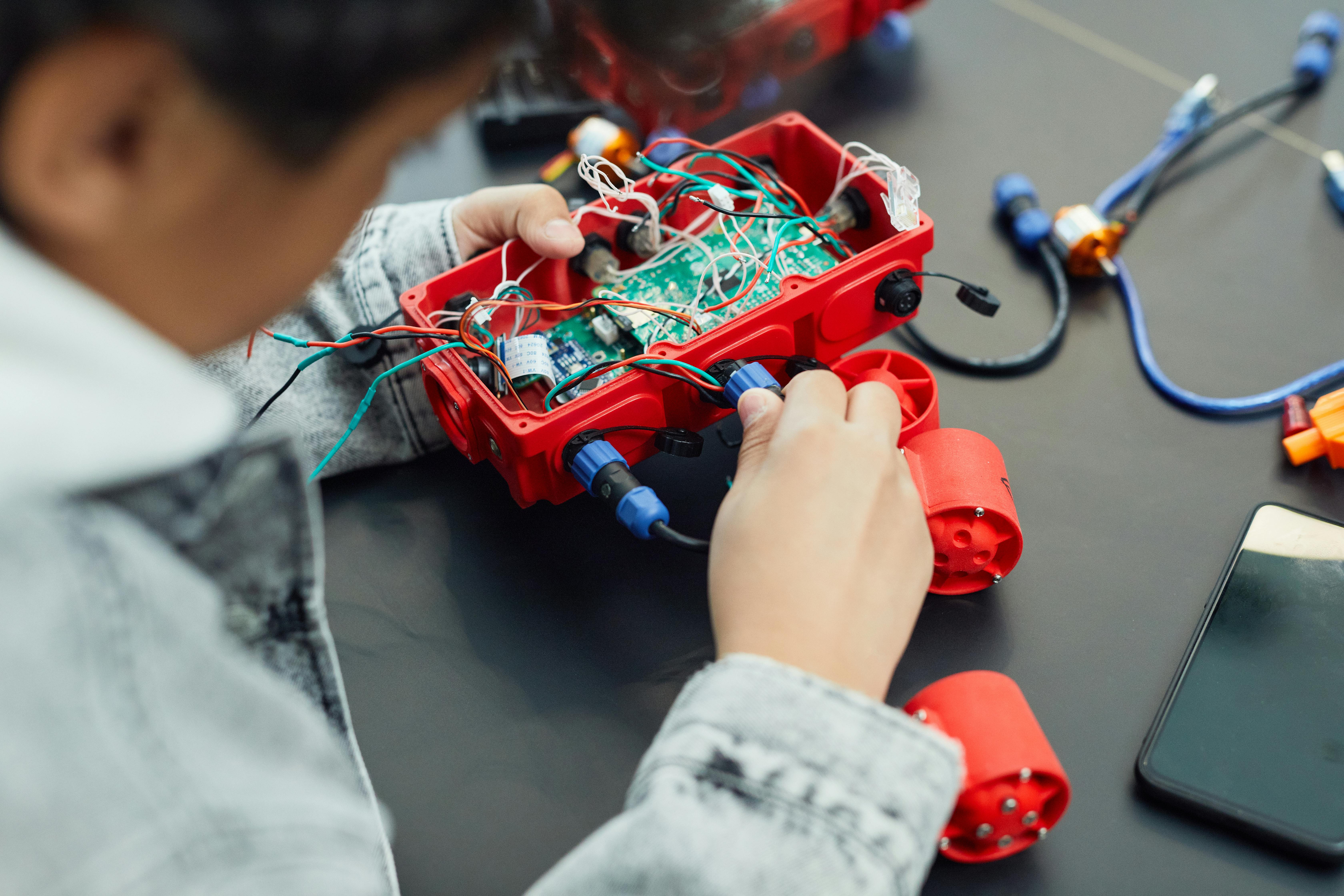As an affiliate, I earn from qualifying purchases, but this doesn't affect the reviews or recommendations—your trust is important to me!
Creating Your Own DIY Lava Lamp Science Experiment at Home

Today, We're Making:
- DIY Lava Lamp Experiment
- Create a Simple Solar System Model - A STEM project where kids can research and create a simple solar system model to understand the concept of planets, orbits, and distances better. They can use simple materials like styrofoam balls, paints, wires or strings.
Welcome to A New World of Hands-On Science
Remember being spellbound by the mesmerizing dance of colored blobs in a lava lamp? Now, you don't have to be just an enchanted observer! Welcome to a new world of hands-on science where you can create your own DIY Lava Lamp experiment at home.
A Fun Science Experiment Bringing Back Retro Charm
This simple yet fun science experiment for kids and adults alike brings back the retro charm of the 60s right into your living room. Whether you're a parent looking for engaging science projects for kids or a DIY enthusiast yearning to create a lava lamp at home, this captivating homemade lava lamp tutorial has got you covered.
The Outcome: Learning and Decor
By the end of this guide, not only will you have a visually appealing piece of decor, but you'll also proudly testify to learning science at home.
Let's Illuminate This Enchanting Journey
Now, let's illuminate this enchanting journey into the world of DIY science experiments.
Step 1: Gathering Your Materials for the DIY Lava Lamp Experiment
Just like embarking on any thrilling journey, you first need to pack up your gear! The good news is, creating a homemade lava lamp doesn't require an exhaustive list of supplies. Most of these items can be easily found around the house, making it an accessible and budget-friendly DIY science project.
What You'll Need:- A clear glass or plastic container (Vase, old soda bottle, etc.)
- Vegetable oil
- Food coloring (Your choice in color)
- Water
- Effervescent tablets (like Alka-Seltzer)
By now, you're probably thrilled to witness your very own lava lamp come to life. Let's move onto the next step to help satisfy that eagerness!
Step 2: Setting up the Science Experiment
First, fill about a third of your container with water. Next comes the enchanting component - the oil! Pour it until the container is nearly full. At this stage, you'll notice the oil floating on top of the water instead of mixing with it. This is due to a fascinating principle of science: oil is less dense than water. This is your first scientific discovery on this exciting journey!
Now let your inner artist shine! Add a few drops of food coloring. Remember to choose a color that will stand out clearly against your container. Watch as the droplets trickle down and burst into a riot of color in the water below.
Ready to ignite the magic behind your DIY lava lamp experiment? Here's your spell: effervescent tablets. Just drop one or two into your container and watch as the show begins!
Step 3: Witness Your DIY Science Experiment In Action
The introduction of effervescent tablets into the mixture creates a gas. The gas bubbles rise up through the oil, carrying some colored water along with them. As the gas bubbles reach the top and escape into the air, the colored water falls back down. This fascinating process mimics the hypnotizing motion of a conventional lava lamp.
Unveiling the mystique hidden in this everyday phenomenon can truly light up your children's face with curiosity. This lava lamp DIY exercise not only provides superb entertainment but also promotes an interest in science, particularly in fluid mechanics and density. Imagine that! All of this valuable learning taking place right in your home.
At this juncture, you're not merely a spectator of this captivating lava lamp experiment, you are the one commanding the show!

As we dim the lights on our DIY Lava Lamp adventure
Remember, science doesn't have to be confined to a textbook and a classroom. It can arrive in colorful, enchanting packages right into your hands, in the form of a homemade lava lamp.
Now that the experiment is complete
Take a step back and soak in the wonder of your creation. Relish in the visual spectacle you've created, knowing it's more than just a stunning decor piece. It is physical proof of the scientific principles you've made come alive right on your tabletop!
You've proven creating your own science experiment can be fascinating, illuminating, and, indeed, fun!
So, keep that spirit of curiosity alive and continue exploring the magical world of do-it-yourself science. Who knows what marvels you'll create next!

You May Also Like These:
Create a Simple Solar System Model
Broaden your child's understanding of our solar system by getting hands-on with this fun and educational STEM project. A great opportunity for learning and creativity, this project allows children to visualize the position, size, and differences between our nine planets. Let's kick-start the exploration!
Materials You Will Need:
- 9 Styrofoam Balls: different sizes to represent the planets
- Acrylic Paints: different colors to paint your planets
- Paint Brushes: to apply the paints
- Stick or Rod: to hold and arrange your planets
- String: to hang your planets from the rod
- Puncher: for making holes in the Styrofoam balls
Steps to Create a Simple Solar System Model:
- Research: Start by researching about the planets in our solar system. Learn about their colors, sizes, and distance from each other.
-
Painting: Paint the Styrofoam balls to represent the planets. Here is a quick guide:
- Mercury - Gray
- Venus - Yellow
- Earth - Blue and Green
- Mars - Red
- Jupiter - Orange and White with stripes
- Saturn - Light Yellow (Don’t forget the rings!)
- Uranus - Light Blue
- Neptune - Dark Blue
- Pluto - Brown
- Assembly: Once the paint is dry, punch a hole into each ball. Make sure the holes are big enough to thread your string through. Tie a knot at one end of the string, then thread the ball onto the string. Repeat this for all the planets.
- Arranging the Planets: Attach the string with planets to the rod or stick. Arrange them in order from closest to the sun (Mercury) to farthest from the sun (Pluto).
- Finishing Touch: Find a good spot to hang your solar system model. It's a beautiful piece of educational decor for your home!
Keeping Your Child Engaged:
Make this a fun experience by asking your child questions about each planet as they are creating their model. This will encourage them to remember the facts they’ve researched. Happy exploring!
Building a Solar System Model: STEM Project
Materials Needed:
- 10 styrofoam balls of different sizes
- Acrylic paint (assorted colors)
- 10 wooden skewers or dowel rods
- String or fishing line
- Glue gun
- Styrofoam sheet to use as base
Instructions:
Follow these steps carefully to successfully complete this STEM project:
Step 1: Paint the Styrofoam Balls
Assign a color to each planet and paint the styrofoam balls accordingly. The largest ball will represent the sun.
Step 2: Create the Base
Place the painted styrofoam balls on the styrofoam sheet in the correct order of the solar system, maintaining appropriate distance to represent their actual positions in the solar system.
Step 3: Attach the Planets
Once the paint is dry, insert the skewer or dowel into each planet and then insert the other end into the foam sheet base. The sun should be at the center with the planets surrounding it.
Step 4: Final Touches
Hang the solar system model using the string or fishing line. Ensure it's stable before letting go. Remember to never leave children unsupervised with this project as the skewers can be sharp. Adult supervision is necessary while handling the glue gun.
STEM Project: Creating a 3D Solar System
Ingredients:- 10 Styrofoam balls of different sizes
- 1 long stick
- Acrylic paint (assorted colors)
- 1 paintbrush
- String or fishing line
- Paint the styrofoam balls: Using the acrylic paint, color each styrofoam ball to represent the planets and the sun in our solar system. The largest ball should be painted yellow (for the sun), and the other balls can be painted to represent each of the planets.
- Let them dry: Allow the painted styrofoam balls to dry completely before moving on to the next step. This might take a couple of hours.
- Assemble the solar system: Arrange the planets along the stick in the order of their distance from the sun. The order, from closest to the sun to furthest away, is: Mercury, Venus, Earth, Mars, Jupiter, Saturn, Uranus, and Neptune. Use Pluto as a dwarf plant, which is even further out, if you want to include it.
- Attach the balls to the stick: Use the string or fishing line to hang each planet from the stick. Attach the string to each styrofoam ball using a tied loop, and then tie the other end of the string around the stick. The sun should be at the center with the balls (representing the planets) suspended on either side.
- Display your model: Hang your solar system model somewhere where you can see it. You now have a 3D model of our solar system that you can use to learn about the planets!
STEM Project: Making Your Own Paints
Lets dive into an exciting Science, Technology, Engineering, and Mathematics (STEM) project. Today we will be creating our own paints. This is not only fun, but also a great way to understand the fundamentals of color mixing and chemical reactions.
Here is what you will need:
- Egg yolks
- Epsom salts
- Hot water
- Food coloring
- Mixing bowls and spoons
Step-by-Step Instructions:
- Preparation: First, accumulate all the required materials. Clear a workspace and ensure it’s clean and free from unnecessary items.
- Mixing the base: Separate the yolk of the egg from the white and place it into your mixing bowl. This acts as the base of our paint.
- Preparing the Epsom salts: Dissolve a handful of Epsom salts in a cup of hot water. This helps us create the translucent gleam in our paint.
- Combining the elements: Slowly, add the Epsom salts solution to your egg yolk base while constantly stirring.
- Adding color: Now, add your desired food coloring to the mixture. Mix it well to disperse the color evenly.
- Testing: Finally, test out your homemade paint on a piece of paper to check the color and consistency.
There you have it- pure, homemade STEM fun! Don’t forget to clean up afterward.
Ingredients:
- A D battery
- Two pieces of coil-insulated wire
- A small light bulb (make sure it's meant for the same voltage as your battery)
Instructions:
1. Prepare the wires
Strip off about half an inch of plastic insulation from the ends of the two wires. Be careful not to cut the metal of the wire itself.
2. Attach wires to the battery
Take one wire and attach one end to the positive ('+') terminal of the battery. You can do this by simply taping the bare end onto the battery. Do the same with the other wire, but attach it to the negative ('-') terminal.
3. Connect the light bulb
Take the free end of the first wire and touch it to the base of the light bulb. Take the free end of the second wire and touch it to the silver part on the side of the bulb.
4. Observe and document
When both wires are touching the bulb, it should light up. Congratulations, you've just made a simple electric circuit! Make sure to take notes or photos of your work – they're important for any good STEM project.



























